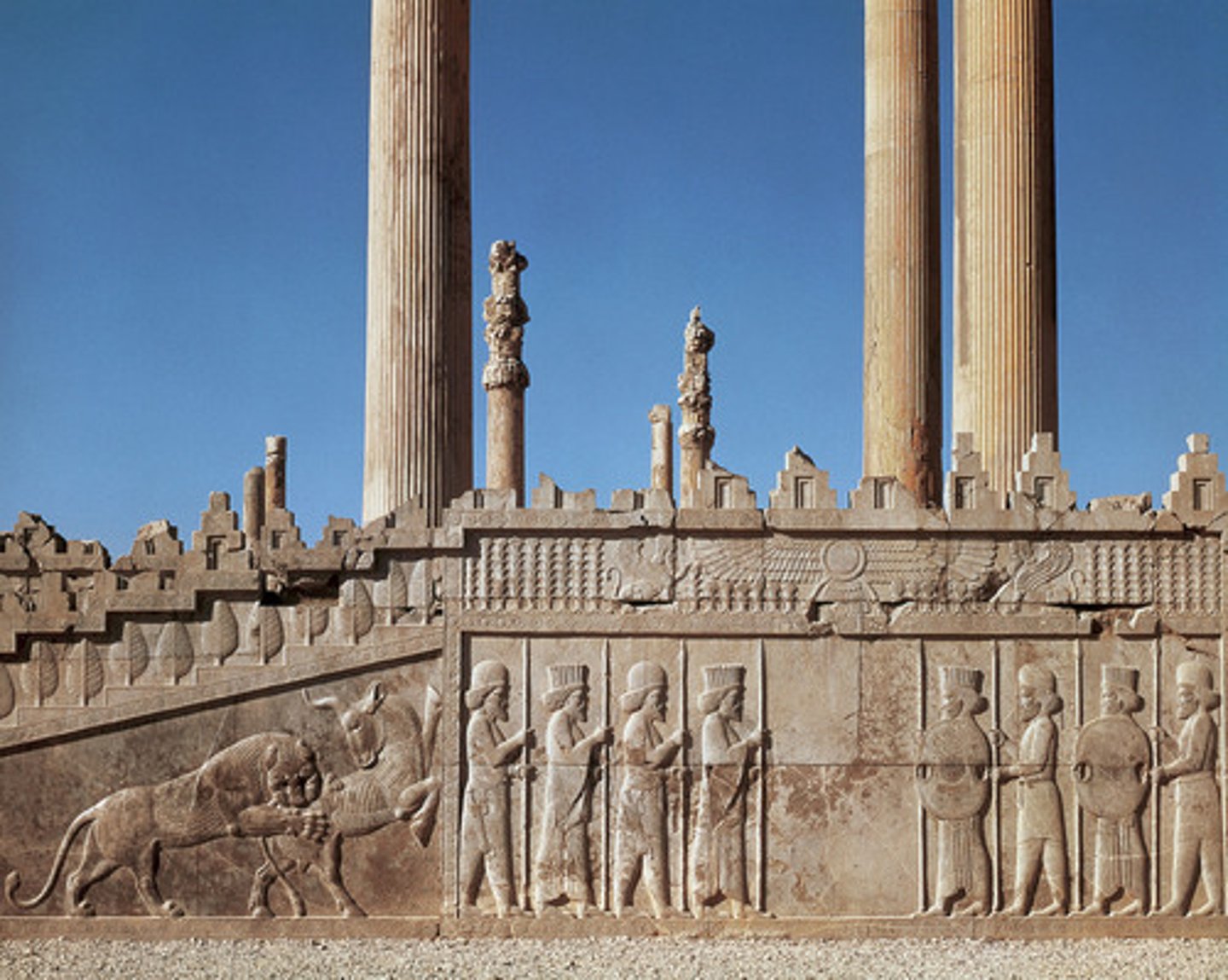Ancient Near Eastern Art
1/5
There's no tags or description
Looks like no tags are added yet.
Name | Mastery | Learn | Test | Matching | Spaced |
|---|
No study sessions yet.
6 Terms
- deity Anu (god of the sky; most important Sumerian deity)
- buttresses spaced across surface to create light and shadow pattern
- whitewashed to disguise mud appearance
- tapers down so rainwater washes off
- temple on top small and removed form populace; access reserved for royalty and clergy
- only base remains
- interior contains cella and smaller rooms
- top terrace for outdoor rituals; temple for indoor
- resembles mountain and contrasts with vast flat terrain
- built high because gods descend from heaves to high place on earth
- four corners oriented to compass
White Temple and its ziggurat
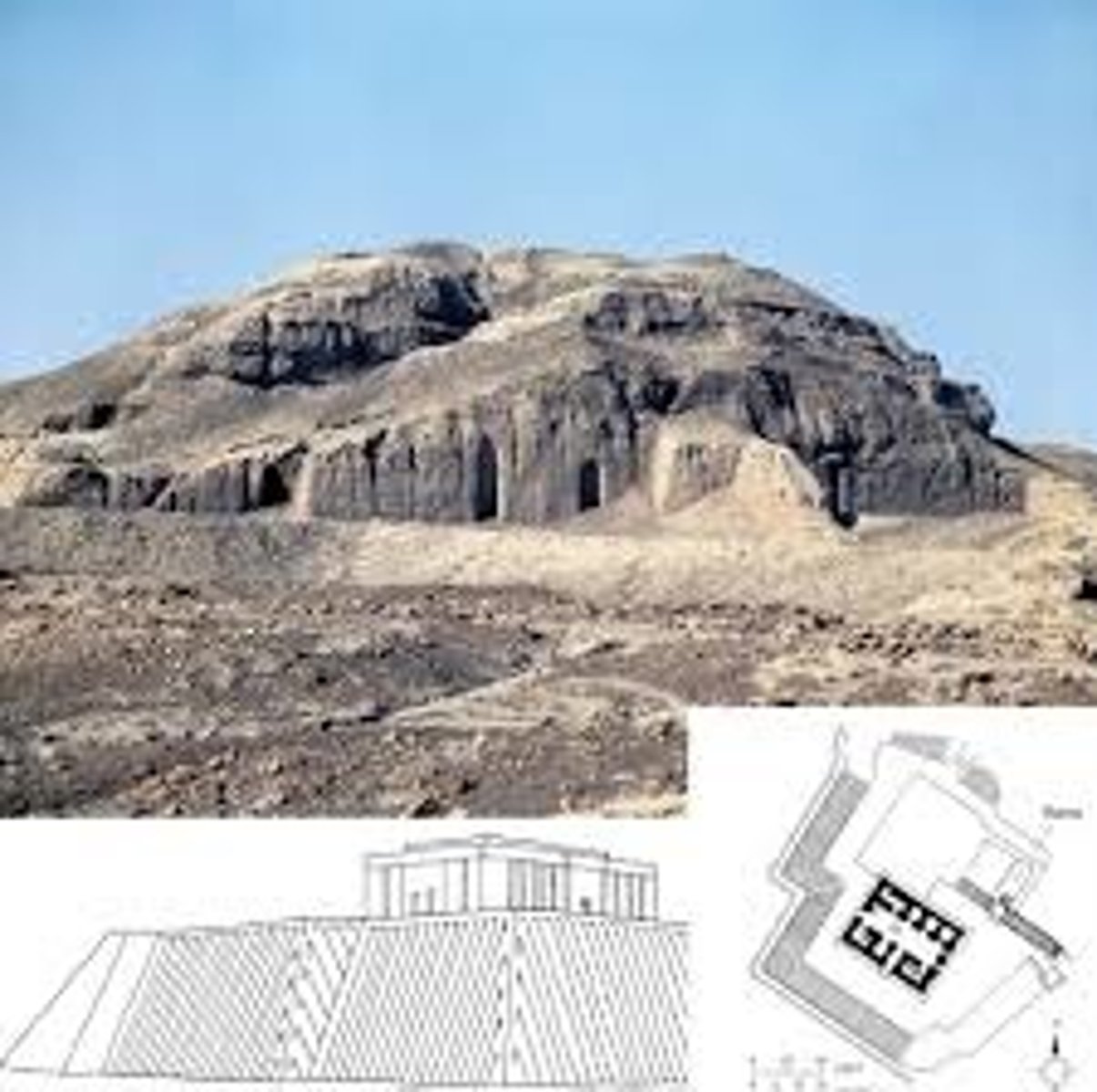
- different heights (hierarchy of scale)
- hands folded in gesture of prayer
- huge eyes in awe, perhaps staring at the deity
- men: bare upper chest; skirt from waist down; bear in ripple patterns; belt
- "It offers prayers" inscribed on back
- representatives of Sumerian worshipers
- large, sturdy feet
- sometimes hold cups/branches
- placed in temple and praying (to Abu?)
- found buried in groups under temple floor
- hundreds survive
- not specific people
Statues of votive figures, from the Square Temple at Eshnunna (modern Tell Asmar, Iraq)
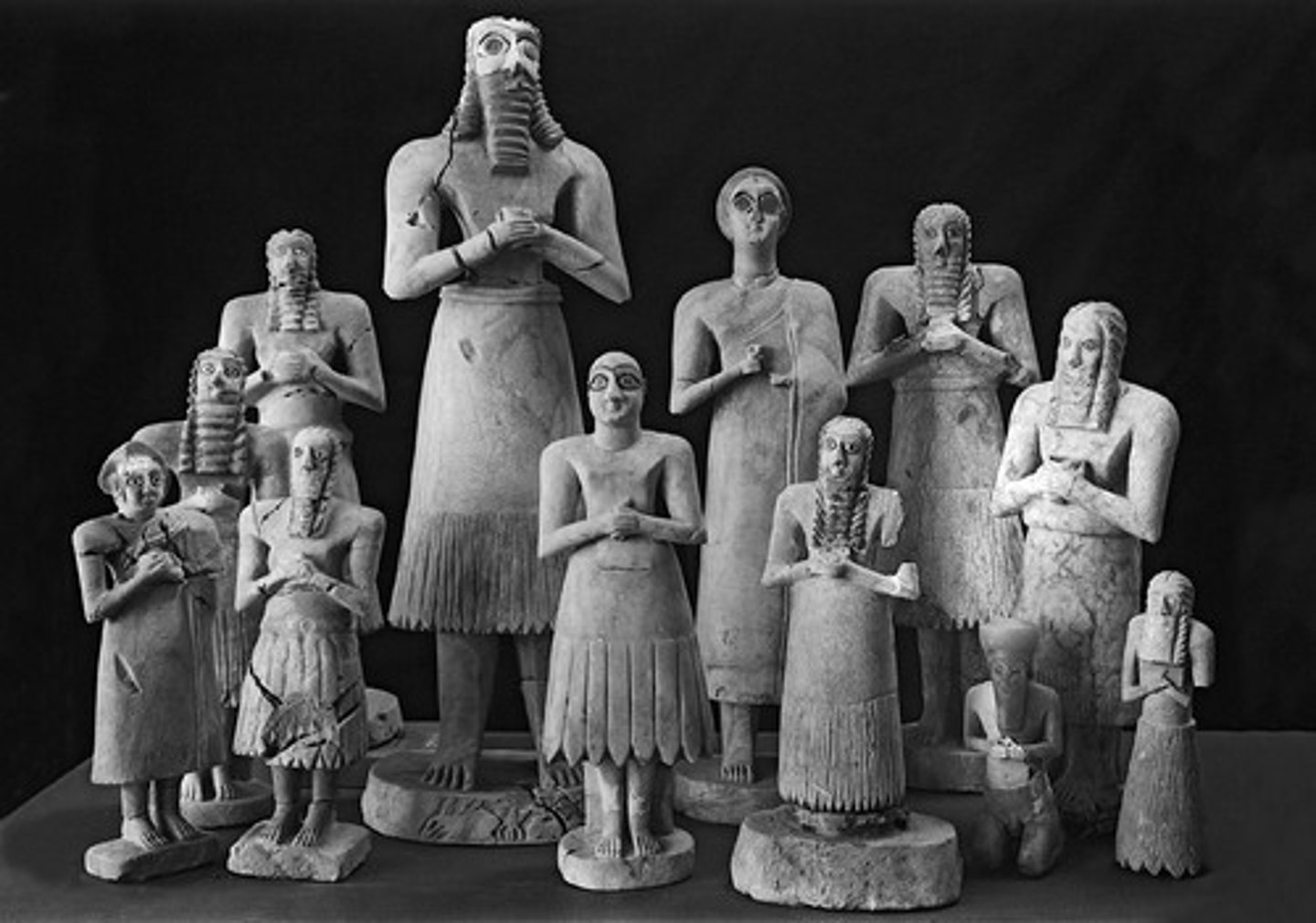
- reflects extensive trading network: lapis lazuli from Afghanistan; shells from Persian Gulf; red limestone from India
- figures w/ broad frontal shoulders, body in profile
- emphasized eyes, eyebrows, ears
- organized in registers; figures stand on ground lines
- narrative to support ruler in a story
- left to right, bottom to top
- war side: account of warfare where losers suffer injury; enemy soldiers naked (sign of defeat) and marched to be presented to king (in hierarchic scale)
- peace side: serene scenes of feasting (possibly of above victory) including servants' preparation of
Standard of Ur from the Royal Tombs at Ur (modern Tell el-Muqayyar, Iraq)
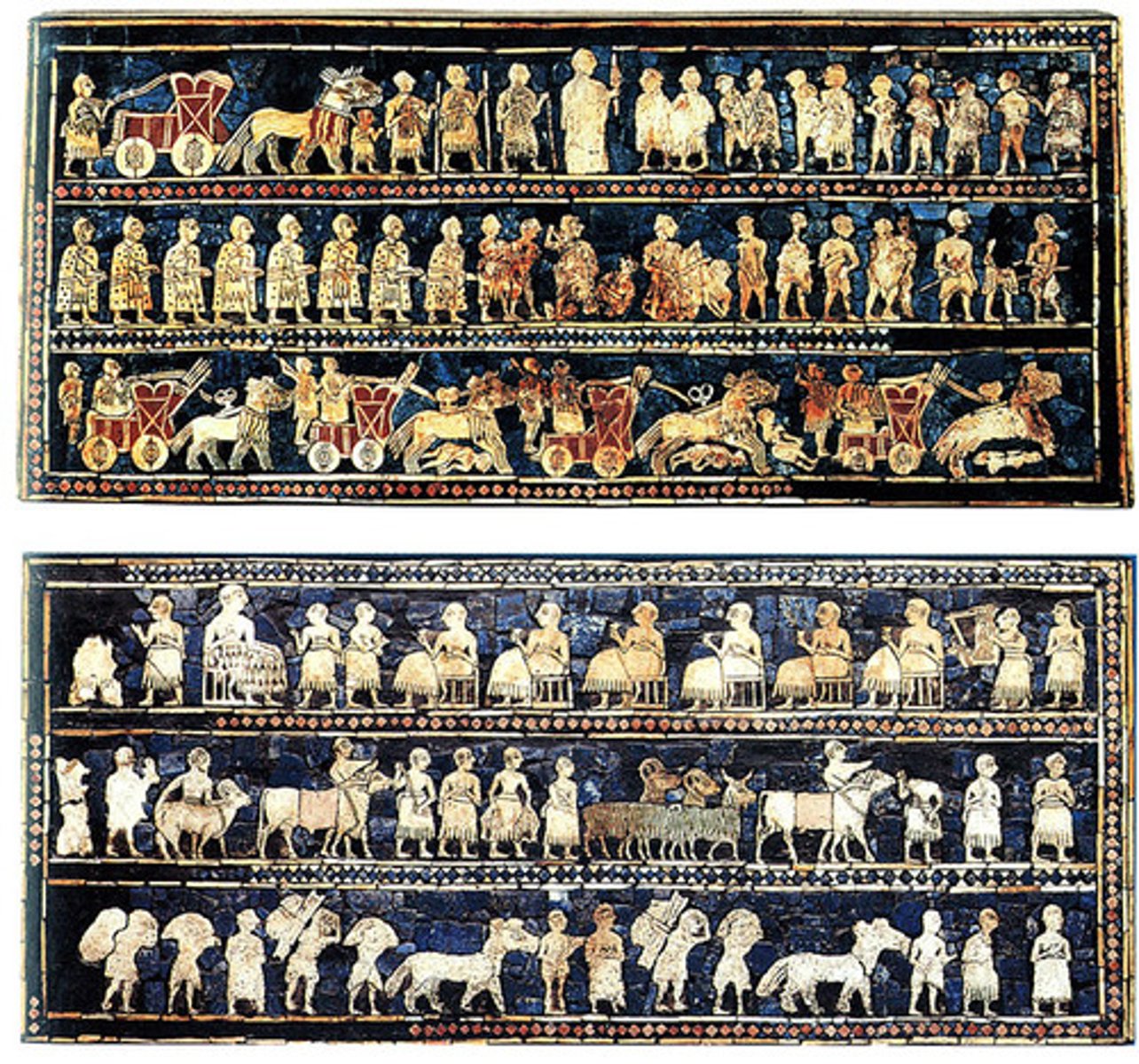
- right to left, top to bottom
- text in Akkadian language
- Hammurabi united Mesopotamia and created dominant kingdom
- one of earliest law codes ever written
- sun god (Shamash) handing Hammurabi ring and rod of kingship (signs of royal power), and rope
- Shamash's beard fuller
- depicts Hammurabi's ability to approach gods on behalf of people = key feature of authority
The Code of Hammurabi

- human-headed winged animal guardian figures
- five legs (front: standing at attention; side: walking)
- wards off in/visible enemies
- feeling of harmony and stability
- placed at either side of each gate (in Sargon II's city wall at Khorsabad)
- bore weight of arches above gates
Lamassu from the citadel of Sargon II, Dur Sharrukin (modern Khorsabad, Iraq)
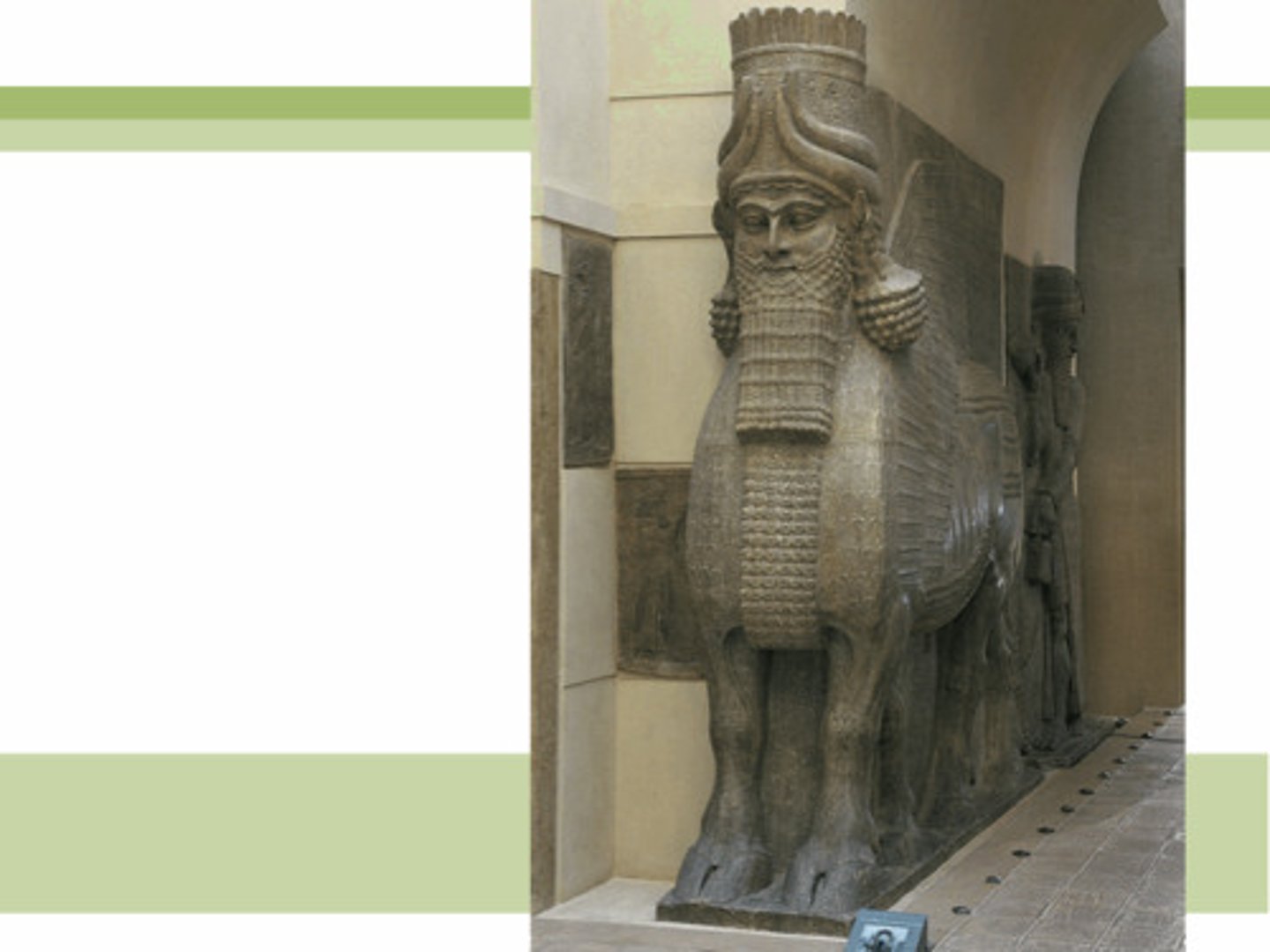
- destroyed by Alexander the Great
- seat for spectacular receptions and festivals
- on artificial terraces
- giant lamassu gates, inscribed as "The Gate of All Nations"
- relief sculptures depict delegations from all parts of empire bringing gifts to be stored in local treasury
- apadana: 36 columns covered by wooden roof; stairways adorned with reliefs of New Year's festival and procession of representatives
- columns w/ bell-shaped base (inverted lotus blossom); capitals bulls/lions
- Immortals (King's Guard); carved onto stairs
- contribution of many cultures
- stairs w/ central relief of king enthroned with attendants; crown prince behind him w/ dignitaries bowing
- orderly/harmonious world symbolized by static processions
Audience Hall (apadana) of Darius and Xerxes
